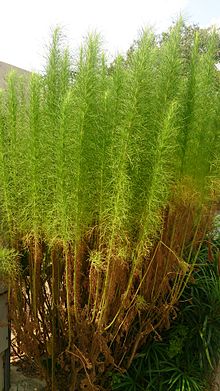Map Snapshot


1 Record
Status
"Native of central Europe (Bohemia, Austria)" (Reed, 1964).
Seasonality Snapshot
Use of media featured on Maryland Biodiversity Project is only permitted with express permission of the photographer.
No images available
Source: Wikipedia
| Artemisia scoparia | |
|---|---|

| |
| Scientific classification | |
| Kingdom: | Plantae |
| Clade: | Tracheophytes |
| Clade: | Angiosperms |
| Clade: | Eudicots |
| Clade: | Asterids |
| Order: | Asterales |
| Family: | Asteraceae |
| Genus: | Artemisia |
| Species: | A. scoparia
|
| Binomial name | |
| Artemisia scoparia | |
| Synonyms[3] | |
|
Synonymy
| |
Artemisia scoparia is a Eurasian species in the genus Artemisia, in the sunflower family. It is widespread across much of Eurasia from France to Japan, including China, India, Russia, Germany, Poland, central + southwest Asia, etc.[4][5]
The English common name of Artemisia scoparia is virgate wormwood,[6] capillary wormwood,[6] or redstem wormwood. In Mandarin Chinese it is known as yīn chén (Traditional: 茵陳) and it is an important traditional Chinese medicine,[citation needed][7] and is considered interchangeable with Artemisia capillaris for that purpose. Its pollen can be allergenic.[8]
Chemical constituents
[edit]- Capillarisin[9]
- Chlorogenic acid butyl ester
- 6,7-Dimethylesculetin
- Isosabandin
- Magnolioside (isoscopoletin-β-D-glucopyranoside)
- 7-Methoxycoumarin
- 7-Methylesculetin
- Sabandin A[10]
- Sabandin B
- Scoparone (6,7-dimethoxycoumarin) [11]
- Scopoletin
- β-Sitosterol
- Capillin
References
[edit]- ^ Tropicos search for Artemisia scoparia
- ^ Roxb. Hort. Bengal. 61 1814
- ^ The Plant List Artemisia scoparia Waldst. & Kitam.
- ^ Flora of China, 猪毛蒿 zhu mao hao, Artemisia scoparia Waldstein & Kitaibel, Descr. Icon. Pl. Hung. 1: 66. 1802.
- ^ Altervista Flora Italiana, Assenzio scopario, Artemisia scoparia Waldst. & Kit. includes photos and European distribution map
- ^ a b English Names for Korean Native Plants (PDF). Pocheon: Korea National Arboretum. 2015. pp. 360–361. ISBN 978-89-97450-98-5. Archived from the original (PDF) on 25 May 2017. Retrieved 25 January 2017 – via Korea Forest Service.
- ^ Ding, Jiwei; Wang, Linlin; He, Chunnian; Zhao, Jun; Si, Lijun; Huang, Hua (2021-06-12). "Artemisia scoparia: Traditional uses, active constituents and pharmacological effects". Journal of Ethnopharmacology. 273: 113960. doi:10.1016/j.jep.2021.113960. ISSN 0378-8741. PMID 33636317. S2CID 232065726.
- ^ Jaggi KS; Gangal SV (1987). "Isolation and identification of pollen allergens of Artemisia scoparia". J Allergy Clin Immunol. 80 (4): 569–572. doi:10.1016/0091-6749(87)90008-X. PMID 3668120.
- ^ "Chemical Study on Artemisia scoparia". Archived from the original on September 30, 2007. Retrieved November 17, 2006.
- ^ Ali MS; Jahangir M; Saleem M (2003). "Structural distinction between sabandins A and B from Artemisia scoparia waldst. (Asteraceae)". Nat. Prod. Res. 17 (1): 1–4. doi:10.1080/10575630290020640. PMID 12674134. S2CID 32672104.
- ^ Hoult JR; Payá M (1996). "Pharmacological and biochemical actions of simple coumarins: natural products with therapeutic potential". Gen. Pharmacol. 27 (4): 713–722. doi:10.1016/0306-3623(95)02112-4. PMID 8853310.
